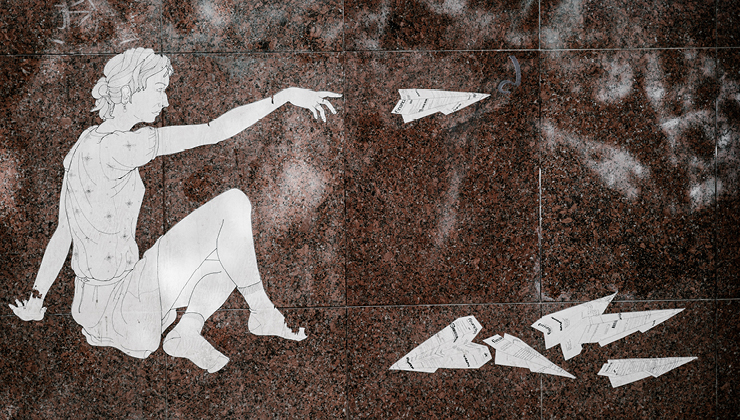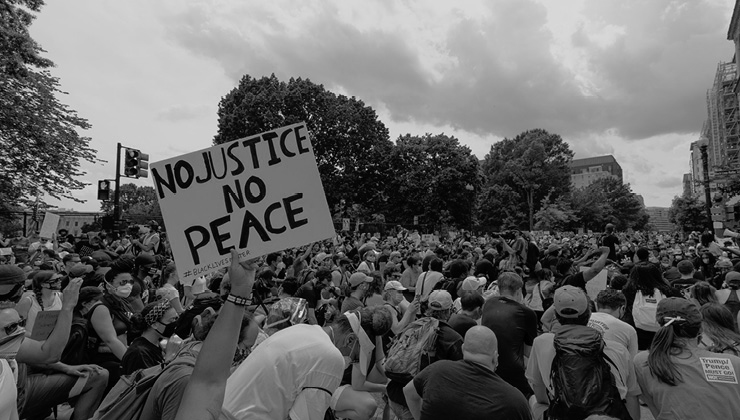This post is based on interviews with Lebanese women activists involved in the October 2019 protests. Quotes throughout the blog are taken from these interviews.
Protests in Lebanon have seen women’s demands incorporated by the movement, yet their demands are yet to be recognised and implemented by the government. Meray Maddah, spoke to some of the female activists about their call for systemic reform that fosters a better status for women in Lebanese society.
Over the past year, Lebanon has witnessed landmark mass protests calling for a complete change in its political system and reform towards people’s rights. The mass uprising started in response to the newly imposed taxes of the Lebanese government. Within weeks, countless peaceful protests were beginning to occupy squares across Lebanon. Accusations of brazen corruption against the ruling class, poor governance, and a widening gap between the elites and the rest of the populace prevailed in the protestors’ calls for change.
Against a backdrop of deteriorating economic conditions and a rapidly depreciating currency, protesters from all backgrounds continuously took to the streets. The protest movement, which later became known as the October Revolution or the October 17th Uprising, saw women participating at an unprecedented level. “We should mention that October 17th helped to flip the stereotypical image of women,” says a female activist, “[…] no one can eliminate the women’s presence from the public opinion nor the squares anymore. They [women] have the fundamental right to project their views in any way possible.”
It is important to understand the role that women played in framing the demands of the movement and whether their engagement within the protest movement had any impact on the status of Lebanese women. Since the beginning of the uprising, women’s demands have been incorporated by the movement, yet this suffered a decline as more crises emerged and so today women still have a similar status to that prior to the protests.
She broke the barrier of fear! The blow that hit the political class showed that they can no longer bypass our demands and that they should listen to the people!
Representation matters
Women in Lebanon have never wavered from participating in different mass protests in the country and have often been centre stage in movements focused on social justice and reform. October 17th was no different in that regard, yet the number of women demonstrating was exceptional in both number and the type of participation.
Women’s demands for their social, economic and political rights have gradually gained momentum since the beginning of the protests. Fundamental demands such as a just civil code for judiciary, better economic compensation, the ability for Lebanese mothers to pass their citizenship to their children, etc. were just some of principle demands in the protest movement.
Previous demands for women’s political representation were co-opted in January 2020 when six women were appointed to then Prime Minister, Hassan Diab’s cabinet, including Zeina Akar Adra as the defence minister and the Deputy Prime Minister – an appointment that is unprecedented in the Arab world. “It was a neoliberal approach on our demands”, comments a second Lebanese social justice activist, on how establishment parties tried to expropriate women’s issues.
The selection of six women leading high-level positions in a national Cabinet was a record setting number in Lebanon’s history. Yet, the same Lebanese activist believes that the appointments were focused on publicity and polishing the Cabinet’s image than on addressing women’s needs and implementing systematic reforms.
A movement through the sum of its parts
The presence of women within a grassroots movement like Lebanon’s October Revolution has been highly visible on many occasions. Candle-lit vigils with thousands of women marching through Beirut’s main streets and squares was a way to emphasise their roles. Women coming together in such public spaces highlighted their demands and made their presence even more prominent in the uprising.
Another moment in the protests’ timeline saw women being vanguards against violence and creating a human shield between security forces and demonstrators. “For a movement that was leaderless, we saw how women employed many spaces, and as a result they stirred conversations related to women’s issues because of their presence,” says a third Lebanese activist who joined the mass protests from the very beginning.
She, like countless other citizens, felt that that this time was profoundly different from past protests when she and others demonstrated for their rights. “Drained” is how she describes herself when she joined the anti-government protests. However, the same activist was also motivated to join these rallies because those who were demonstrating were people like her, “they were not political analysts nor pundits, they were normal people just like you and I. Ones who were pushed to the edge and have had enough.”
Violence against the protestors
As with many anti-establishment protests, violence was not missing from the demonstrations. Clashes between demonstrators and security forces left severe casualties and victims, and there are many reports of the use of excessive force including live ammunition, rubber bullets and buck-shots. Although violence against protesters did not discriminate between genders, women’s marches focused on rejecting the brutality. Even young artists emphasised how Lebanese women marched in an attempt to counter historical images that stoked violent memories of the civil war. One Lebanese activist adds, “women are starting things that are unprecedented in this country – you do not have to be violent to be powerful.”
Moreover, art was another tool that was used to amplify the protestors voices, especially women’s voices, and to document the protests’ course in public spaces. These displays have further highlighted the nature of the protesters and their intention of remaining peaceful while demanding their rights and focusing on national unity.
An overdue way forward
Frustration and demotivation are unanimous sentiments among the women interviewed. Cooperation with the State towards improving the status of women has been a bumpy road. A population reeling from the coronavirus pandemic and repercussions from the fatal August 4th explosion includes women whose demands have been profoundly overlooked.
In September of 2019, the Lebanese government – then headed by Prime Minister Saad el-Hariri (who returned to power in October 2020 following Diab’s resignation) – approved the country’s first National Action Plan (NAP) on UN Security Council Resolution 1325 on Women, Peace and Security (WPS). The NAP was an opportunity by the State to focus attention and action onto women’s issues in Lebanon.
The NAP was also in cooperation with the National Commission for Lebanese Women (NCLW), an official body which was meant to steer the NAP forward – a month later, the October 17th protests reshuffled the country’s priorities. The NCLW’s latest contribution, as part of the NAP, was helping women access social justice during the Covid-19 public health crisis, raising awareness of gender-based-violence (GBV) issues and alleviating economic conditions for women.
In theory, such legislations should have enhanced women’s status on issues such as the nationality law, child marriage, domestic violence and personal status code. Hope is still prevalent among women, yet, in the opinion of those interviewed, the real gains will take years to be felt and the process of change is a perpetual work-in-progress.
I believe there is always hope and the determination remains among us. This is our cause and we will continue the work to reach our goals
The upcoming government should draw on the illustrated demands and implement bills designed to enhance Lebanese women’s status. Such laws as the landmark law against sexual harassment is a step in the right direction towards ending discriminatory laws based on gender and guaranteeing equal treatment, yet more work remains to be done.
Lebanese women personalised the movement’s demands through the inclusion of their rights and issues as indispensable elements of the desired change. When measuring the gains of their participation it appears that their physical presence was the most visible one. Their strong engagement captured the public opinion, as well as international and local media outlets. What remains, however, is not only their incorporation into the country’s power-sharing dynamics; but also, systematic reforms that foster a better status for women.
The views, thoughts and opinions expressed in this blog post are those of the author(s) only, and do not reflect LSE’s or those of the LSE Centre for Women, Peace and Security.
Image credit: Maya Ismail





